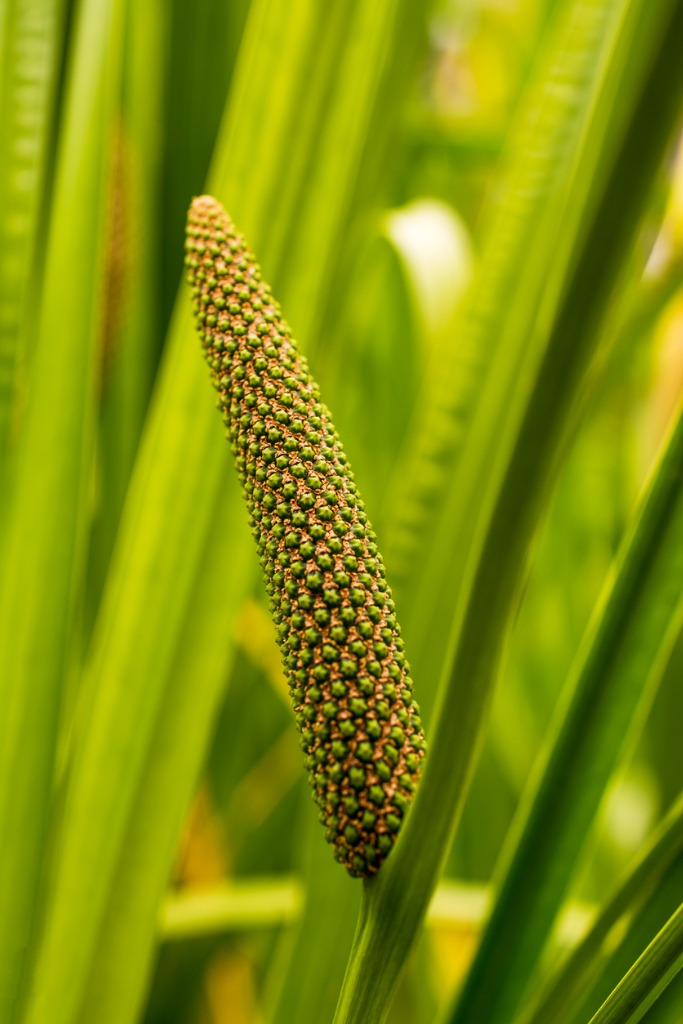Sweet Flag
(Acorus calamus)

Description
Acorus calamus (also called sweet flag, sway or muskrat root, among many common names) is a species of flowering plant with psychoactive chemicals. It is a tall wetland monocot of the family Acoraceae, in the genus Acorus. Although used in traditional medicine over centuries to treat digestive disorders and pain, there is no clinical evidence for its safety or efficacy – and ingested calamus may be toxic – leading to its commercial ban in the United States. Sweet flag is a herbaceous perennial, 2 m (79 in) tall. Its leaves resembles those of the iris family. Sweet flag consists of tufts of basal leaves that rise from a spreading rhizome. The leaves are erect yellowish-brown, radical, with pink sheathing at their bases, sword-shaped, flat and narrow, tapering into a long, acute point, and have parallel veins. The leaves have smooth edges, which can be wavy or crimped. The sweet flag can be distinguished from iris and other similar plants by the crimped edges of the leaves, the fragrant odor it emits when crushed, and the presence of a spadix. Only plants that grow in water bear flowers. The solid, triangular flower-stems rise from the axils of the outer leaves. A semi-erect spadix emerges from one side of the flower stem. The spadix is solid, cylindrical, tapers at each end, and is 5 to 10 cm in length. A covering spathe, as is usual with Araceae, is absent. The spadix is densely crowded with tiny greenish-yellow flowers. Each flower contains six petals and stamens enclosed in a perianth with six divisions, surrounding a three-celled, oblong ovary with a sessile stigma. The flowers are sweetly fragrant. In Europe, it flowers for about a month in late spring or early summer, but does not bear fruit. The fruit is a berry filled with mucus, which when ripe falls into the water and disperses by floating. In Asia, it also fruits sparingly, and propagates itself mainly by growth of its rhizome, forming colonies. The branched, cylindrical, knobby rhizome is the thickness of a human finger and has numerous coarse fibrous roots below it. The exterior is brown and the interior white.
Taxonomic tree:







